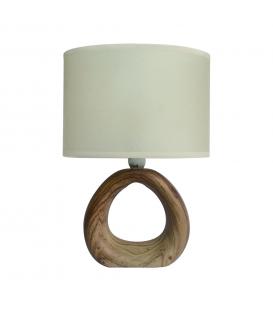LED lamps: the big product offensive for more energy efficiency and less costs
In an era marked by escalating energy demands and growing environmental concerns, the push for energy efficiency and sustainability has gained paramount importance. In this context, the advent of LED (Light Emitting Diode) lamps has triggered a monumental shift in the lighting industry. The transition from traditional incandescent and fluorescent lighting to LED technology is not just a simple upgrade; it's a revolutionary leap towards a more sustainable and cost-effective future.

The LED Advantage:
LED lamps have revolutionized lighting technology, offering a plethora of advantages over their conventional counterparts. Unlike incandescent bulbs that emit light through the heating of a filament and fluorescent lamps that rely on gas discharge, LED lamps operate by passing a current through a semiconductor material, emitting light directly without generating excessive heat. This fundamental difference alone yields remarkable energy savings and durability.
Energy Efficiency Amplified:
The unparalleled energy efficiency of LED lamps is a game-changer. LED technology is known for its significantly lower energy consumption. In comparison to traditional incandescent bulbs, LEDs can produce the same amount of light using up to 80% less energy. This has profound implications for both households and businesses, as it translates to substantially reduced electricity bills and a lower carbon footprint. The ripple effect of mass LED adoption on global energy consumption and emissions is substantial.
Cost Savings Redefined:
The cost-saving potential of LED lamps extends far beyond reduced energy consumption. Although the upfront cost of LED lamps may be slightly higher than that of incandescent bulbs, the long-term economic benefits are undeniable. LED lamps boast an extended lifespan, often lasting up to 25,000 hours or more. This longevity eliminates the frequent replacements associated with traditional bulbs, saving on both replacement costs and the inconvenience of constantly changing bulbs.
Furthermore, LED lamps require less maintenance due to their robustness and durability. Their solid-state design makes them resistant to vibrations, shock, and environmental factors, making them ideal for various applications, including outdoor lighting and industrial settings.
Environmental Implications:
LED lamps not only benefit consumers' wallets but also contribute significantly to environmental preservation. The reduced energy consumption directly translates to lowered greenhouse gas emissions, contributing to global efforts to combat climate change. Additionally, LED lamps are free of hazardous materials like mercury, commonly found in fluorescent lamps. This makes disposal safer and reduces the risk of environmental contamination.
The Future of Lighting:
The LED revolution is only gaining momentum. As technology advances, LED lamps are becoming even more efficient, versatile, and cost-effective. Their ability to be integrated with smart home systems further enhances their appeal, allowing users to control brightness, color temperature, and even create dynamic lighting scenarios.
In conclusion, the surge in LED lamp adoption marks a significant product offensive in the pursuit of energy efficiency and cost savings. Beyond their impressive technical attributes, LED lamps have the power to shape a more sustainable future by conserving energy, reducing costs, and mitigating environmental impact. As we witness the widespread replacement of traditional lighting with LED technology, it's clear that the brilliance of LED lamps illuminates not only our surroundings but also the path towards a brighter and greener tomorrow.







Comments (0)